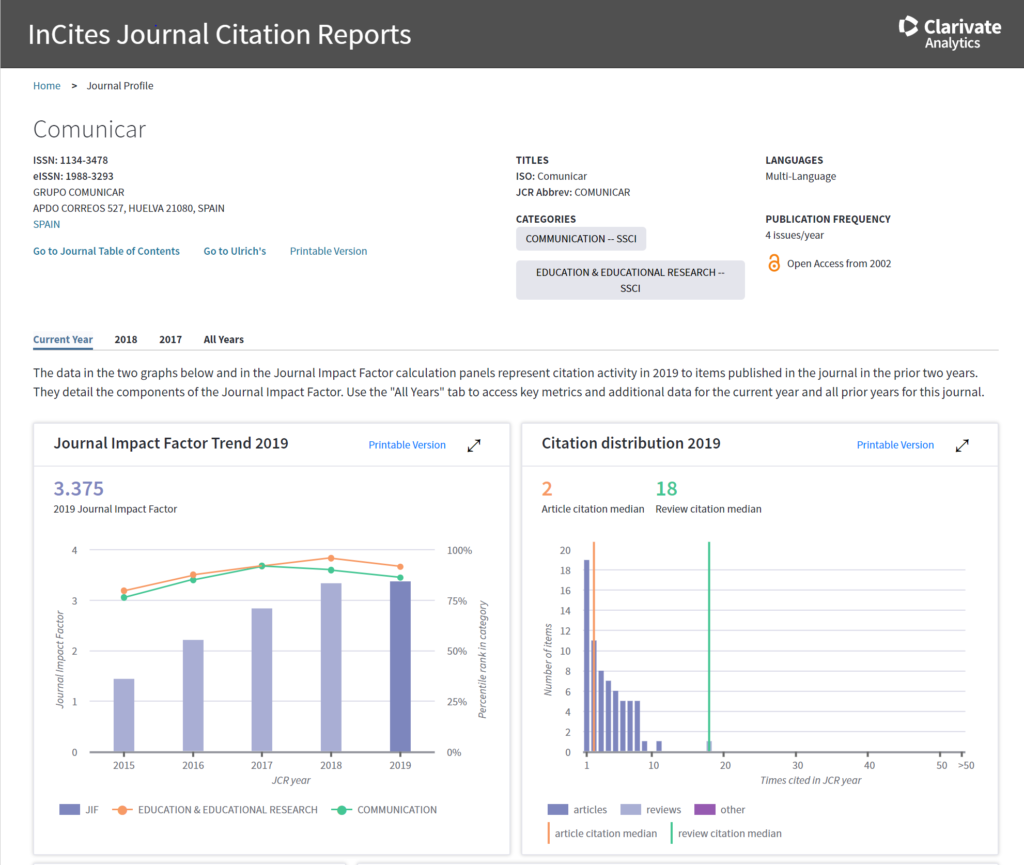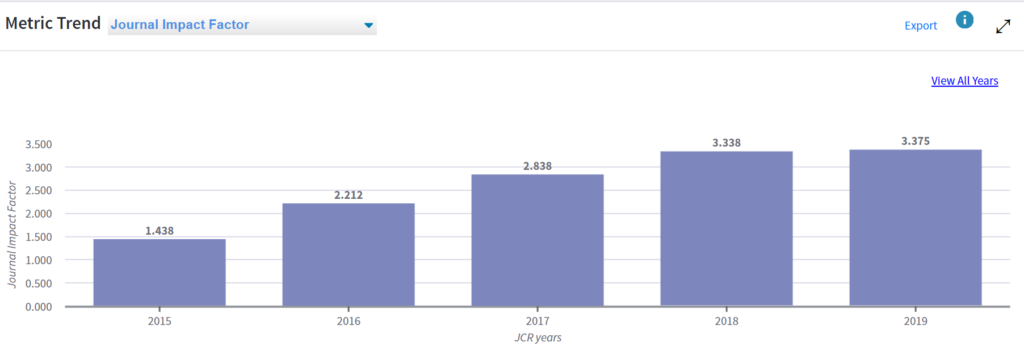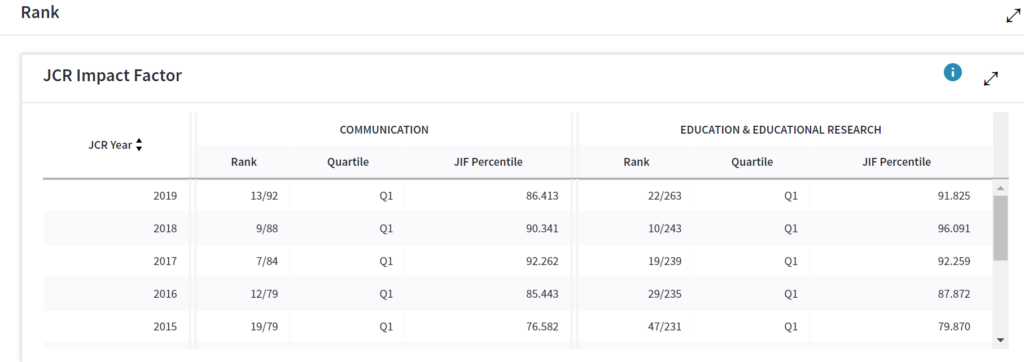Author: Ignacio Aguaded – Translation: Erika-Lucia Gonzalez-Carrion
This final week of June, as every year, the new Journal Citation Reports (the recognized JCR) has been published. It gathers the most prestigious and selected list of scientific journals in the world and it serves as a reference in most countries to sanction the most original and relevant research contributions.
The «Master Journal List» has this year 12,171 journals in all areas of knowledge from 83 countries (although the bias of the first English-speaking world is evident, although also of the scientific-technical journals against the socio-humanistic ones). In any case, it is the most consolidated, rigorous, and leading product of quality science in the world.
Compared to the 2018 edition, 351 journals have increased and 33 have been expelled for presenting a high rate of self-citation (self), perverting its natural position at the base. The growth of the average impact has been 9.41% and the presence, increasingly, of «open access» magazines is also noteworthy with 1,658 magazines offered in open. In addition, 7,487 magazines are already hybrid, mixing different access systems. The JCR ranking is integrated into the science portal WoS (Web of Science), where there are 42,500 «scholar journals», 15,000 of which are in open access. As a portal, 13,000 «predator» journals have been diagnosed and therefore monitored. This year they have processed 3 million «papers».

The new JCR portal within the Web of Science presented worldwide by Clarivate Analytics, the company that owns it, offers the famous lists by areas indexed by their recognized IF (impact factor) that generates the classification of the same in quartiles (Q). In addition, as a novelty, the information offered by each journal has been notably improved, providing multiple data on the evolution of the header, the journals cited, cited journals, index of immediacy, consolidated impact factor … All this information is proprietary and requires a password for access, but since last year Clarivate allows access to a public Master List with technical information of each journal to know if it is in its main list (JCR) or in its list ESCI (Emerging Sources Citation Index): https://bit.ly/3dPk6XO.

Spanish science is present in the famous JCR with 131 journals (5 more than the previous year) with a symbolic 1.076% of the database (which shows that our scientific publishing network is rickety). From this super-elect list, only 14 journals are positioned in Q1 (only 10% of the Spanish ones). Although, here we have increased with respect to the previous year, where only 8 reached this privileged world position.

Comunicar’ consolidates its leadership in the Journal Citation Reports, as in previous years. It is the third Spanish journal in JCR in number of citations (of the total of the areas) and the 7th in the ranking of the 131. Therefore, it is placed in the equator of the 7 journals that are in the club of the JCR-Q1. Since 2009, when it entered this selective database, ‘Comunicar’ has been climbing positions, being Q1 since 2015 in the two areas in which it is integrated: «Communication» and «Education». In both areas it leads widely the presence of Spanish science in scientific journals in the world, being the only Q1 in «Communication» (13th of 92) and sharing, for the first time, the Q1 leadership in «Education» (22nd of 263, top 8% worldwide) with a Spanish journal «Educación XX1».
The impact factor of ‘Comunicar’ at the base (IF 3,375) is higher than the previous year and its growth all these years has been sustained and progressive, with an enormous internal consistency, parallel to its growth in Scopus.
A great new year for a leading magazine, which is not only concerned with the impact, but also with the quality of Spanish science in its disciplines, and which ratifies in JCR what has already been published in Scopus (2nd magazine in the world in Cultural Studies this year), SJR, REDIB, Google and FECYT.
